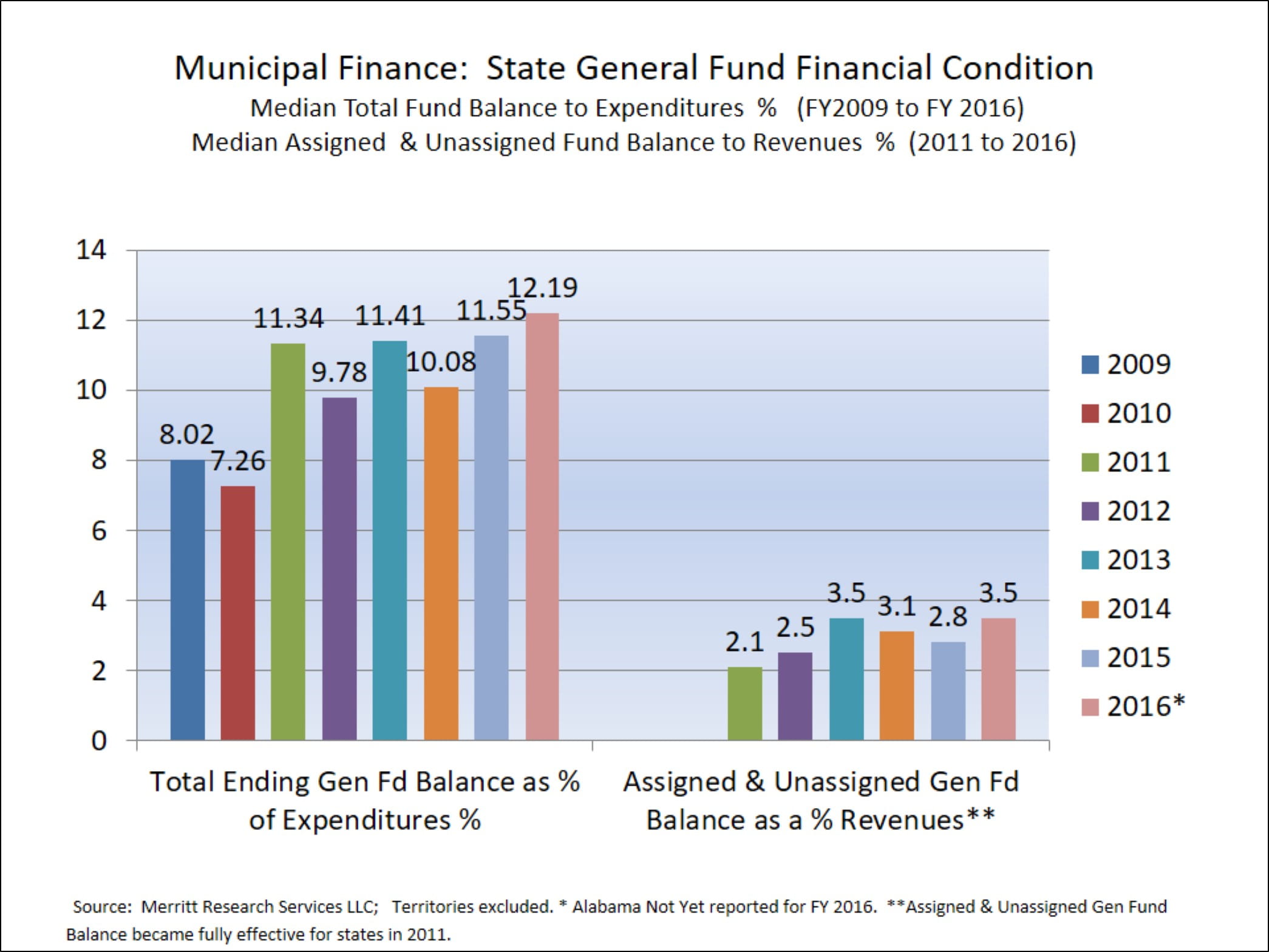General Fund Balance for Majority of U.S. States Fiscal Year 2016 Continue on a Positive Path
by Richard Ciccarone
As measured on a median basis, state total general fund balances in relation to expenditures recorded their best end of year operating position since the 2008 credit crisis. The total fund balance includes designated and restricted monies, which are reserved and can only be used for special funds and services, as well as unreserved monies available for any purpose. The total fund balance is calculated as the difference between assets and liabilities in a governmental fund.
The state median for total general fund balance as a percent of expenditures reached 12.2 percent for Fiscal Year 2016, the highest level in eight years. In comparison, the low point occurred in 2010 after state reserves were tapped to offset lower tax revenue collections in the aftermath of the great recession.
On the other hand, the assigned and unassigned fund balance, as defined under the Governmental Accounting Standards Board’s (GASB) Statement 54, shows a more narrow cushion and and a little less rosy picture relative to general fund revenues. Under this approach, the median balance, which is available for any purpose, represents only about a quarter of the total fund balance. In 2016, the median state assigned and unassigned fund balance for all states stood at 3.5 percent of general fund revenues. That percentage does positively tie the ratio’s previous high point achieved in FY 2013. The implementation of GASB 54 took place in 2011, and replaced a similar but less structured unreserved balance measure.
The three highest assigned and unassigned fund balances to revenues for FY 2016 were Alaska at 150.7 percent, Wyoming at 121.7 percent and Hawaii at 28.0 percent. The three lowest positions belonged to Illinois at -27.7 percent, West Virginia at -13.8 percent and Louisiana at -9.9 percent.
Data for this piece was provided by Merritt Research Services

